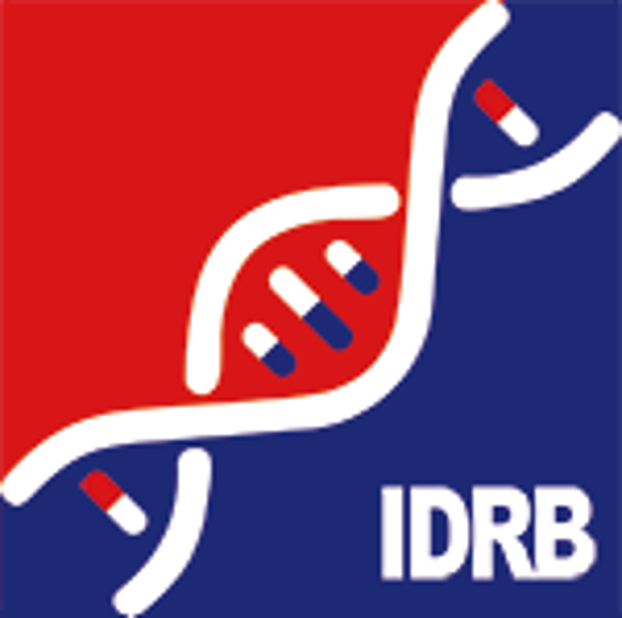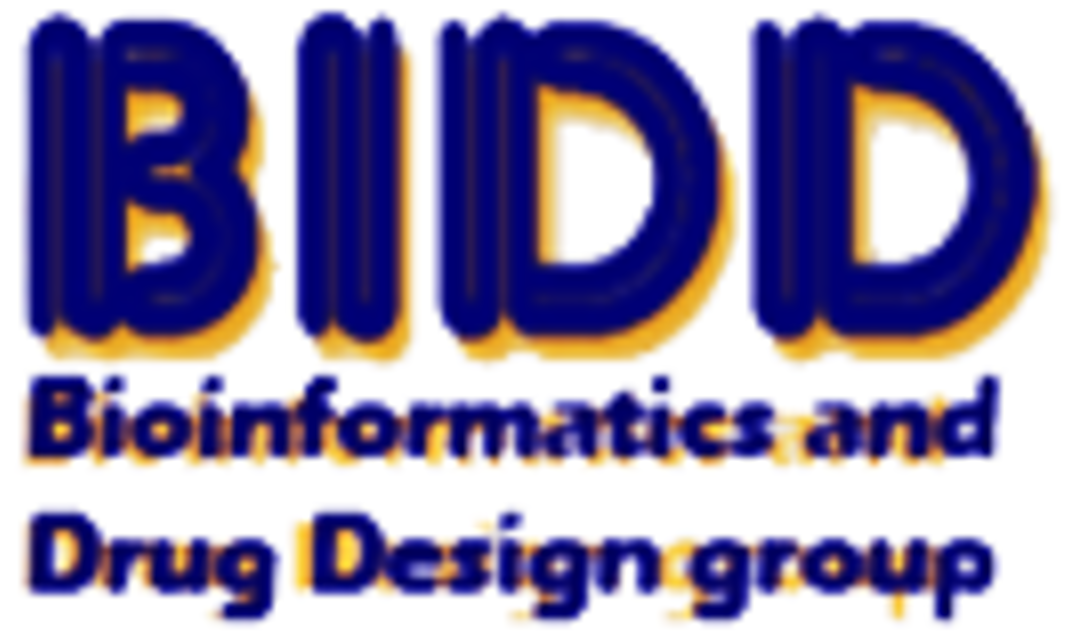Target Information
| Target General Infomation | |||||
|---|---|---|---|---|---|
| Target ID |
T84040
|
||||
| Former ID |
TTDS00465
|
||||
| Target Name |
Transient receptor potential cation channel subfamily A member 1
|
||||
| Gene Name |
TRPA1
|
||||
| Synonyms |
ANKTM1; Ankyrin-like with transmembrane domains protein 1; Transformation-sensitive protein p120; TRPA1
|
||||
| Target Type |
Successful
|
||||
| Disease | Pain [ICD9: 338, 356.0, 356.8,780; ICD10: G64, G90.0, R52, G89] | ||||
| Throat irritation [ICD9: 478.29; ICD10: J39.2] | |||||
| Function |
Receptor-activated non-selective cation channel involved in detection of pain and possibly also in cold perception and inner ear function. Has a central role in the pain response to endogenous inflammatory mediators and to a diverse array of volatile irritants, such as mustard oil, garlic and acrolein, an irritant from tears gas and vehicule exhaust fumes. Acts also as a ionotropic cannabinoid receptor by being activated by delta(9)- tetrahydrocannabinol (THC), the psychoactive component of marijuana. Not involved in menthol sensation. May be a component for the mechanosensitive transduction channel of hair cells in inner ear, thereby participating in the perception of sounds. Probably operated by a phosphatidylinositol second messenger system (By similarity).
|
||||
| BioChemical Class |
Transient receptor potential catioin channel
|
||||
| Target Validation |
T84040
|
||||
| UniProt ID | |||||
| Sequence |
MKRSLRKMWRPGEKKEPQGVVYEDVPDDTEDFKESLKVVFEGSAYGLQNFNKQKKLKRCD
DMDTFFLHYAAAEGQIELMEKITRDSSLEVLHEMDDYGNTPLHCAVEKNQIESVKFLLSR GANPNLRNFNMMAPLHIAVQGMNNEVMKVLLEHRTIDVNLEGENGNTAVIIACTTNNSEA LQILLKKGAKPCKSNKWGCFPIHQAAFSGSKECMEIILRFGEEHGYSRQLHINFMNNGKA TPLHLAVQNGDLEMIKMCLDNGAQIDPVEKGRCTAIHFAATQGATEIVKLMISSYSGSVD IVNTTDGCHETMLHRASLFDHHELADYLISVGADINKIDSEGRSPLILATASASWNIVNL LLSKGAQVDIKDNFGRNFLHLTVQQPYGLKNLRPEFMQMQQIKELVMDEDNDGCTPLHYA CRQGGPGSVNNLLGFNVSIHSKSKDKKSPLHFAASYGRINTCQRLLQDISDTRLLNEGDL HGMTPLHLAAKNGHDKVVQLLLKKGALFLSDHNGWTALHHASMGGYTQTMKVILDTNLKC TDRLDEDGNTALHFAAREGHAKAVALLLSHNADIVLNKQQASFLHLALHNKRKEVVLTII RSKRWDECLKIFSHNSPGNKCPITEMIEYLPECMKVLLDFCMLHSTEDKSCRDYYIEYNF KYLQCPLEFTKKTPTQDVIYEPLTALNAMVQNNRIELLNHPVCKEYLLMKWLAYGFRAHM MNLGSYCLGLIPMTILVVNIKPGMAFNSTGIINETSDHSEILDTTNSYLIKTCMILVFLS SIFGYCKEAGQIFQQKRNYFMDISNVLEWIIYTTGIIFVLPLFVEIPAHLQWQCGAIAVY FYWMNFLLYLQRFENCGIFIVMLEVILKTLLRSTVVFIFLLLAFGLSFYILLNLQDPFSS PLLSIIQTFSMMLGDINYRESFLEPYLRNELAHPVLSFAQLVSFTIFVPIVLMNLLIGLA VGDIAEVQKHASLKRIAMQVELHTSLEKKLPLWFLRKVDQKSTIVYPNKPRSGGMLFHIF CFLFCTGEIRQEIPNADKSLEMEILKQKYRLKDLTFLLEKQHELIKLIIQKMEIISETED DDSHCSFQDRFKKEQMEQRNSRWNTVLRAVKAKTHHLEP |
||||
| Structure |
1UOH
|
||||
| Drugs and Mode of Action | |||||
| Drug(s) | Menthol | Drug Info | Approved | Throat irritation | [1], [2] |
| Activator | 1'-acetoxychavicol acetate | Drug Info | [3] | ||
| 1,6-hexamethylene diisocyanate | Drug Info | [4] | |||
| 2-pentenal | Drug Info | [5] | |||
| 4-oxo-nonenal | Drug Info | [6] | |||
| acetaldehyde | Drug Info | [7] | |||
| acrolein | Drug Info | [8] | |||
| artepillin C | Drug Info | [9] | |||
| benzyl bromide | Drug Info | [4] | |||
| bromoacetone | Drug Info | [4] | |||
| chlorobenzylidene malononitrile | Drug Info | [10] | |||
| chloropicrin | Drug Info | [4] | |||
| cinnamaldehyde | Drug Info | [11] | |||
| crotylaldehyde | Drug Info | [12] | |||
| dibenzoxazepine | Drug Info | [10] | |||
| dibutyl phthalate | Drug Info | [13] | |||
| formalin | Drug Info | [14] | |||
| gingerol | Drug Info | [11] | |||
| icilin | Drug Info | [15] | |||
| isovelleral | Drug Info | [16] | |||
| Menthol | Drug Info | [17] | |||
| methyl isocyanate | Drug Info | [4] | |||
| methyl p-hydroxybenzoate | Drug Info | [18] | |||
| methyl salicylate | Drug Info | [11] | |||
| methylglyoxal | Drug Info | [19] | |||
| morphanthridine | Drug Info | [10] | |||
| MTSEA | Drug Info | [20] | |||
| nitrooleic acid | Drug Info | [21] | |||
| NPPB | Drug Info | [22] | |||
| oleocanthal | Drug Info | [23] | |||
| omega-chloroacetophenone | Drug Info | [10] | |||
| PF-4840154 | Drug Info | [24] | |||
| prostaglandin A2 | Drug Info | [25] | |||
| super cinnamaldehyde | Drug Info | [20] | |||
| Inhibitor | 2-methyl-1-(pyridin-3-yl)pent-1-en-3-one oxime | Drug Info | [26] | ||
| 2-methyl-1-(pyridin-4-yl)pent-1-en-3-one oxime | Drug Info | [26] | |||
| 2-methyl-1-(thiophen-2-yl)pent-1-en-3-one oxime | Drug Info | [26] | |||
| 2-methyl-1-(thiophen-3-yl)pent-1-en-3-one oxime | Drug Info | [26] | |||
| 3-Methyl-4-phenylbut-3-en-2-one oxime | Drug Info | [27] | |||
| AMG-2504 | Drug Info | [26] | |||
| AMG-5445 | Drug Info | [26] | |||
| AMG-7160 | Drug Info | [26] | |||
| AMG-9090 | Drug Info | [26] | |||
| AP18 5 | Drug Info | [26] | |||
| Antagonist | A-967079 | Drug Info | [28] | ||
| TRPA1 antagonists | Drug Info | [28] | |||
| Blocker (channel blocker) | AP18 | Drug Info | [29] | ||
| Inhibitor (gating inhibitor) | resolvin D1 | Drug Info | [30] | ||
| resolvin D2 | Drug Info | [31] | |||
| TCS 5861528 | Drug Info | [32] | |||
| Pathways | |||||
| KEGG Pathway | Inflammatory mediator regulation of TRP channels | ||||
| Reactome | TRP channels | ||||
| References | |||||
| REF 1 | FDA Approved Drug Products from FDA Official Website. 2009. Application Number: (NDA) 022029. | ||||
| REF 2 | (http://www.guidetopharmacology.org/) Nucleic Acids Res. 2015 Oct 12. pii: gkv1037. The IUPHAR/BPS Guide to PHARMACOLOGY in 2016: towards curated quantitative interactions between 1300 protein targets and 6000 ligands. (Ligand id: 2471). | ||||
| REF 3 | Galangal pungent component, 1'-acetoxychavicol acetate, activates TRPA1. Biosci Biotechnol Biochem. 2010;74(8):1694-6. Epub 2010 Aug 7. | ||||
| REF 4 | Transient receptor potential ankyrin 1 antagonists block the noxious effects of toxic industrial isocyanates and tear gases. FASEB J. 2009 Apr;23(4):1102-14. | ||||
| REF 5 | Transient receptor potential ankyrin 1 (TRPA1) channel as emerging target for novel analgesics and anti-inflammatory agents. J Med Chem. 2010 Jul 22;53(14):5085-107. | ||||
| REF 6 | Transient receptor potential A1 is a sensory receptor for multiple products of oxidative stress. J Neurosci. 2008 Mar 5;28(10):2485-94. | ||||
| REF 7 | Transient receptor potential A1 mediates acetaldehyde-evoked pain sensation. Eur J Neurosci. 2007 Nov;26(9):2516-23. Epub 2007 Oct 23. | ||||
| REF 8 | TRPA1 mediates the inflammatory actions of environmental irritants and proalgesic agents. Cell. 2006 Mar 24;124(6):1269-82. | ||||
| REF 9 | Artepillin C, a major ingredient of Brazilian propolis, induces a pungent taste by activating TRPA1 channels. PLoS One. 2012;7(11):e48072. | ||||
| REF 10 | Tear gasses CN, CR, and CS are potent activators of the human TRPA1 receptor. Toxicol Appl Pharmacol. 2008 Sep 1;231(2):150-6. | ||||
| REF 11 | Noxious cold ion channel TRPA1 is activated by pungent compounds and bradykinin. Neuron. 2004 Mar 25;41(6):849-57. | ||||
| REF 12 | Cigarette smoke-induced neurogenic inflammation is mediated by alpha,beta-unsaturated aldehydes and the TRPA1 receptor in rodents. J Clin Invest. 2008 Jul;118(7):2574-82. | ||||
| REF 13 | TRPA1 and TRPV1 activation is a novel adjuvant effect mechanism in contact hypersensitivity. J Neuroimmunol. 2009 Feb 15;207(1-2):66-74. | ||||
| REF 14 | An ion channel essential for sensing chemical damage. J Neurosci. 2007 Oct 17;27(42):11412-5. | ||||
| REF 15 | ANKTM1, a TRP-like channel expressed in nociceptive neurons, is activated by cold temperatures. Cell. 2003 Mar 21;112(6):819-29. | ||||
| REF 16 | TRPA1 mediates the noxious effects of natural sesquiterpene deterrents. J Biol Chem. 2008 Aug 29;283(35):24136-44. | ||||
| REF 17 | TRPV1-mediated itch in seasonal allergic rhinitis. Allergy. 2009 May;64(5):807-10. Epub 2009 Feb 13. | ||||
| REF 18 | Methyl p-hydroxybenzoate causes pain sensation through activation of TRPA1 channels. Br J Pharmacol. 2007 May;151(1):153-60. Epub 2007 Mar 12. | ||||
| REF 19 | Inhibiting TRPA1 ion channel reduces loss of cutaneous nerve fiber function in diabetic animals: sustained activation of the TRPA1 channel contributes to the pathogenesis of peripheral diabetic neuropathy. Pharmacol Res. 2012 Jan;65(1):149-58. | ||||
| REF 20 | Noxious compounds activate TRPA1 ion channels through covalent modification of cysteines. Nature. 2007 Feb 1;445(7127):541-5. Epub 2007 Jan 21. | ||||
| REF 21 | Nitrooleic acid, an endogenous product of nitrative stress, activates nociceptive sensory nerves via the direct activation of TRPA1. Mol Pharmacol. 2009 Apr;75(4):820-9. | ||||
| REF 22 | NPPB structure-specifically activates TRPA1 channels. Biochem Pharmacol. 2010 Jul 1;80(1):113-21. | ||||
| REF 23 | Unusual pungency from extra-virgin olive oil is attributable to restricted spatial expression of the receptor of oleocanthal. J Neurosci. 2011 Jan 19;31(3):999-1009. | ||||
| REF 24 | Design and pharmacological evaluation of PF-4840154, a non-electrophilic reference agonist of the TrpA1 channel. Bioorg Med Chem Lett. 2011 Aug 15;21(16):4857-9. | ||||
| REF 25 | Cox-dependent fatty acid metabolites cause pain through activation of the irritant receptor TRPA1. Proc Natl Acad Sci U S A. 2008 Aug 19;105(33):12045-50. | ||||
| REF 26 | Transient receptor potential ankyrin 1 (TRPA1) channel as emerging target for novel analgesics and anti-inflammatory agents. J Med Chem. 2010 Jul 22;53(14):5085-107. doi: 10.1021/jm100062h. | ||||
| REF 27 | Bioorg Med Chem Lett. 2010 Jan 1;20(1):276-9. Epub 2009 Oct 30.Oxime derivatives related to AP18: Agonists and antagonists of the TRPA1 receptor. | ||||
| REF 28 | (http://www.guidetopharmacology.org/) Nucleic Acids Res. 2015 Oct 12. pii: gkv1037. The IUPHAR/BPS Guide to PHARMACOLOGY in 2016: towards curated quantitative interactions between 1300 protein targets and 6000 ligands. (Target id: 485). | ||||
| REF 29 | A role of TRPA1 in mechanical hyperalgesia is revealed by pharmacological inhibition. Mol Pain. 2007 Dec 17;3:40. | ||||
| REF 30 | Resolvin D1 attenuates activation of sensory transient receptor potential channels leading to multiple anti-nociception. Br J Pharmacol. 2010 Oct;161(3):707-20. | ||||
| REF 31 | Resolvin D2 is a potent endogenous inhibitor for transient receptor potential subtype V1/A1, inflammatory pain, and spinal cord synaptic plasticity in mice: distinct roles of resolvin D1, D2, and E1.J Neurosci. 2011 Dec 14;31(50):18433-8. | ||||
| REF 32 | Attenuation of mechanical hypersensitivity by an antagonist of the TRPA1 ion channel in diabetic animals. Anesthesiology. 2009 Jul;111(1):147-54. | ||||
If You Find Any Error in Data or Bug in Web Service, Please Kindly Report It to Dr. Zhou and Dr. Zhang.

